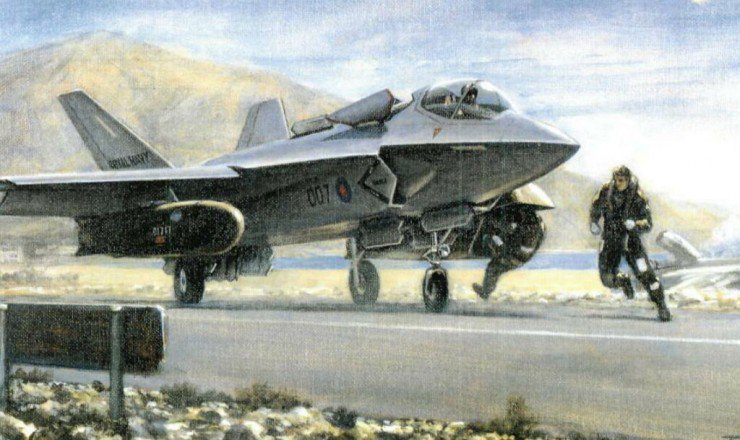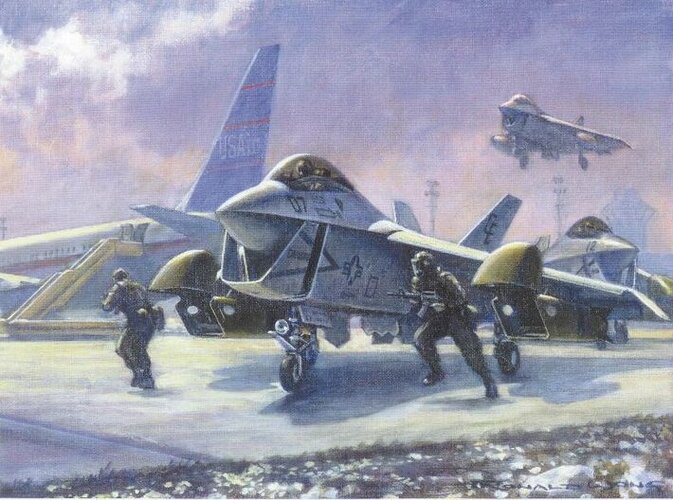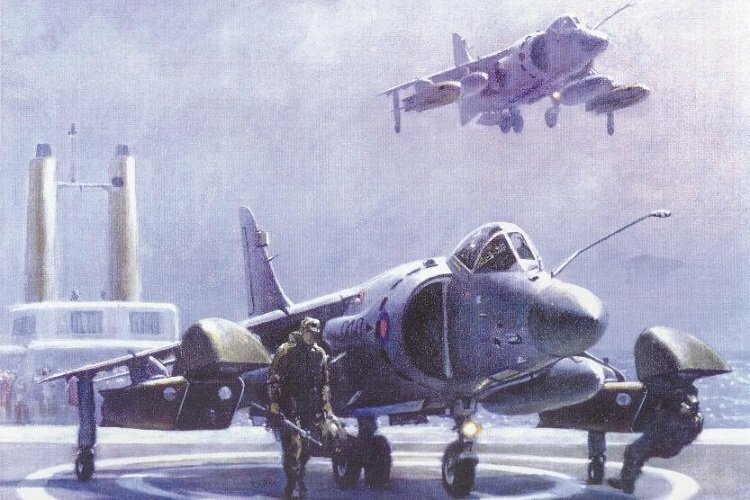Taking alternative history paths further; if the USMC had never decided to operate fixed-wing aircraft from its Tarawa Class amphibs and the RN had never been adamant about getting some kind of air defence aboard the Illustrious Class then the Harrier would have had a sole operator.
Its interesting that the initial plans foresaw Harrier GRs aboard the Illustrious Class for strike rather than a defensive interceptor. In this scenario if the RN retained the Sea Harrier, its no certainty Spain and Italy (who acquired US AV-8s) would have brought them, they could have quite happily and perhaps more profitably operated ASW helicopter carriers. Harrier filled a very niche light carrier role but you can count on the fingers of one hand how many of those there were and its interesting their replacements are bigger and much more multi-purpose air/amphibious operation vessels with Britain and India targeting the high-end in size and capability.
Looking through the few AST.396 and 403 files now available at Kew, its clear experience of Harrier operations in the field was lacking in 1972-74 and there were no firm conclusions. Remote basing and the threat from runway cratering weapons were the main drivers, the RAF wanted a super-Harrier with the speed of a Jaguar and more advanced avionics but this caused many design limitations. I would agree though the P.1216 was probably the pinnacle of what could have been achieved.
I assume when the studies were done in the 1990s for the JAST/JSF the MOD must have had more operational data that made V/STOL still rational, but I suspect the USMC's need to operate from small decks was what secured V/STOL for JAST/JSF. If the USMC had never operated Harriers, I'm not so such the Americans would have bothered to listen to the RAF's desires for a Harrier replacement, they couldn't convince any European nation from 1969 either. The small deck operation requirement has driven the F-35B more than any land-based tactical role. I don't think its feasible for an advanced and support-hungry, data-fused aircraft to operate from a shady tree hangar, some PSP and a farmer's track (or a dusty Wadi). Look at the scale of the RAF Marham rebuilding to operate the type as an indication of what kind of infrastructure is required. Notably the RAF will probably be the only land-based user of the F-35B.
So my answer to Foo Fighter's question is; no its not less effective than the F-35A and is the best mix for what the UK can afford and get the best use out of. Yes, the F-35B is an oddity and with foresight the RAF and RN should have gone with an F-35/C mix.
Sorry for upsetting the V/STOL fan club at this festive time though, have another mince pie on me! ;D





